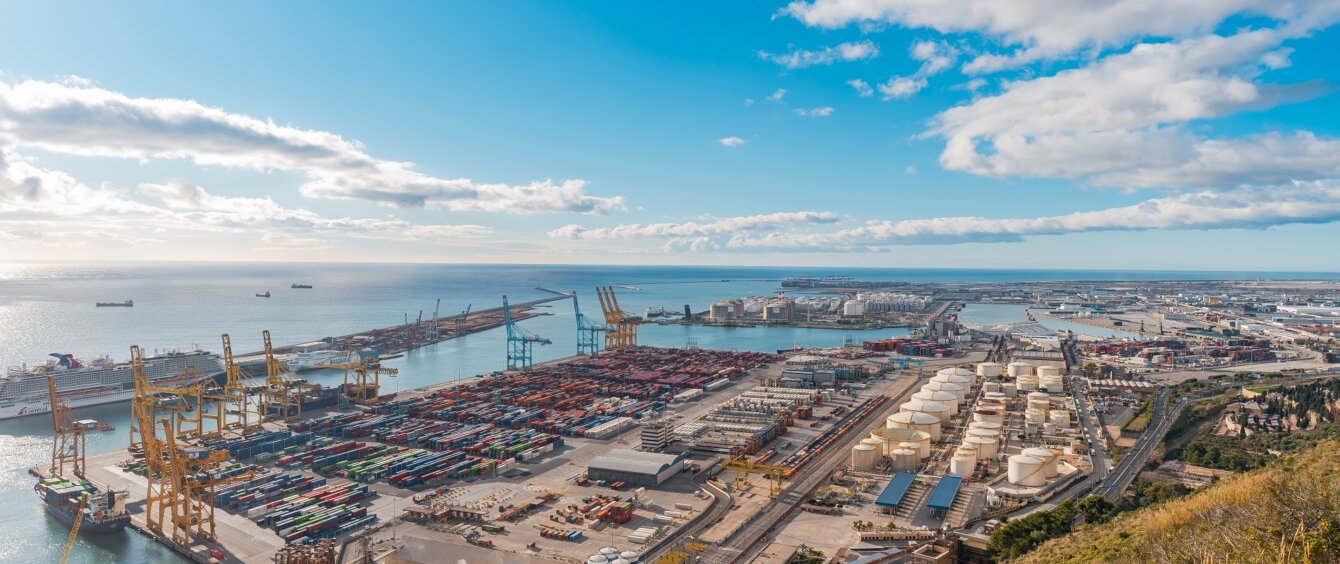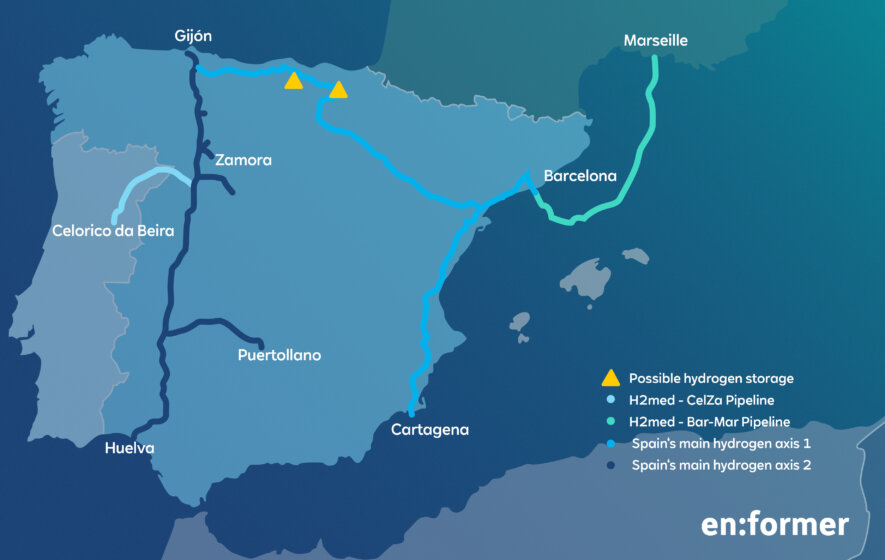There’s no way around hydrogen in the debate on the energy transition. However, it is impossible to build a sustainable hydrogen economy without multinational infrastructure. The European Hydrogen Backbone Initiative presents a vision of Europe’s future in this area. A large-scale project recently received clearance. At a meeting of eight EU member states with borders to the Mediterranean and Portugal (MED9) in Alicante in December 2022, transmission system operators GRTgaz, Teréga, Enagás and REN alongside the heads of state of France, Spain and Portugal reached an agreement on the implementation of a mammoth undertaking to support decarbonisation of European industry: the H2MED hydrogen project, which Germany joined at the end of January 2023.
H2MED replaces MidCat, hydrogen replaces natural gas
It is envisaged that H2MED act as a corridor for green hydrogen, running from the Iberian Peninsula to the European supply network. The new submarine pipeline from Catalonia to Marseille replaces MidCat, the predecessor project that envisaged establishing a pipeline connection from Spain to France via the Pyrenees (covered by the en:former). Due to questionable profitability, France’s rejection and not least reservations in terms of energy policy, plans for the construction of the MidCat pipeline were shelved. It was originally conceived of as a conduit for natural gas transport that was to be retrofitted as part of a complex, costly process thereafter.
The fact that H2MED is a pure hydrogen project has financial advantages. For instance, up to half of the financing can be covered using EU funds within the scope of the Projects of Common Interest, IPCEI, of the European Commission. The prerequisite for this is compliance with EU regulations for the improvement of energy storage and for the promotion of the integration of renewable energy and intelligent networks.
Barcelona and Marseilles to be connected via the Mediterranean seabed
Some two million metric tons of hydrogen are to be conveyed through the new pipeline. This roughly corresponds to ten percent of the European Union‘s demand expected for 2030. By that year, the EU seeks to produce ten million metric tons of hydrogen using its own resources, while sourcing another ten million through imports above all for industry.
Construction is slated to start in the middle of 2025, with completion expected by 2030. The project involves building two pipelines, one of which is the CelZa connection from Celorico, Portugal, to Zamora, Spain, extending along 250 kilometres. It will connect Portugal’s hydrogen production to the port city of Barcelona via Spain‘s emerging main transport axes. This undertaking is predicted to generate 350 million euros in costs. To make this possible, parts of the existing natural gas network on the Iberian Peninsula will have to be converted.
Dubbed BarMar, the second, much more complex and expensive, pipeline will be built to run from the Catalonian coast and transmit gas from the Iberian Peninsula to Marseilles, France. BarMar will be nearly twice as long as CelZa, extending over some 450 kilometres. But that is not the only challenge: The pipeline will rest on the Mediterranean seabed, at depths of up to 2,600 metres. Then the hydrogen will flow from the port city in the south of France to major European industrial regions. This part of the project is estimated to cost 2.5 billion euros.
H2MED extension to Germany planned
January 2023 saw Germany’s involvement in the project. An agreement documenting the country’s accession was reached between French President Emmanuel Macron and German Chancellor Olaf Scholz on the occasion of the German-French declaration on the 60th anniversary of the Elysée Treaty. The additional cost of extending the supply pipeline from Marseilles to Germany is yet to be quantified. A new task force has been entrusted with preparing strategic decisions around European supply by the end of April.
The H2MED project represents an important step in the establishment of hydrogen infrastructure within Europe. Moreover, Germany’s integration and the formation of the task force, which will also take a close look at subsidies, assuages doubts surrounding the project’s profitability. After all, uncertain demand and complicated legal frameworks in particular are cause for concern within industry and among experts alike.

